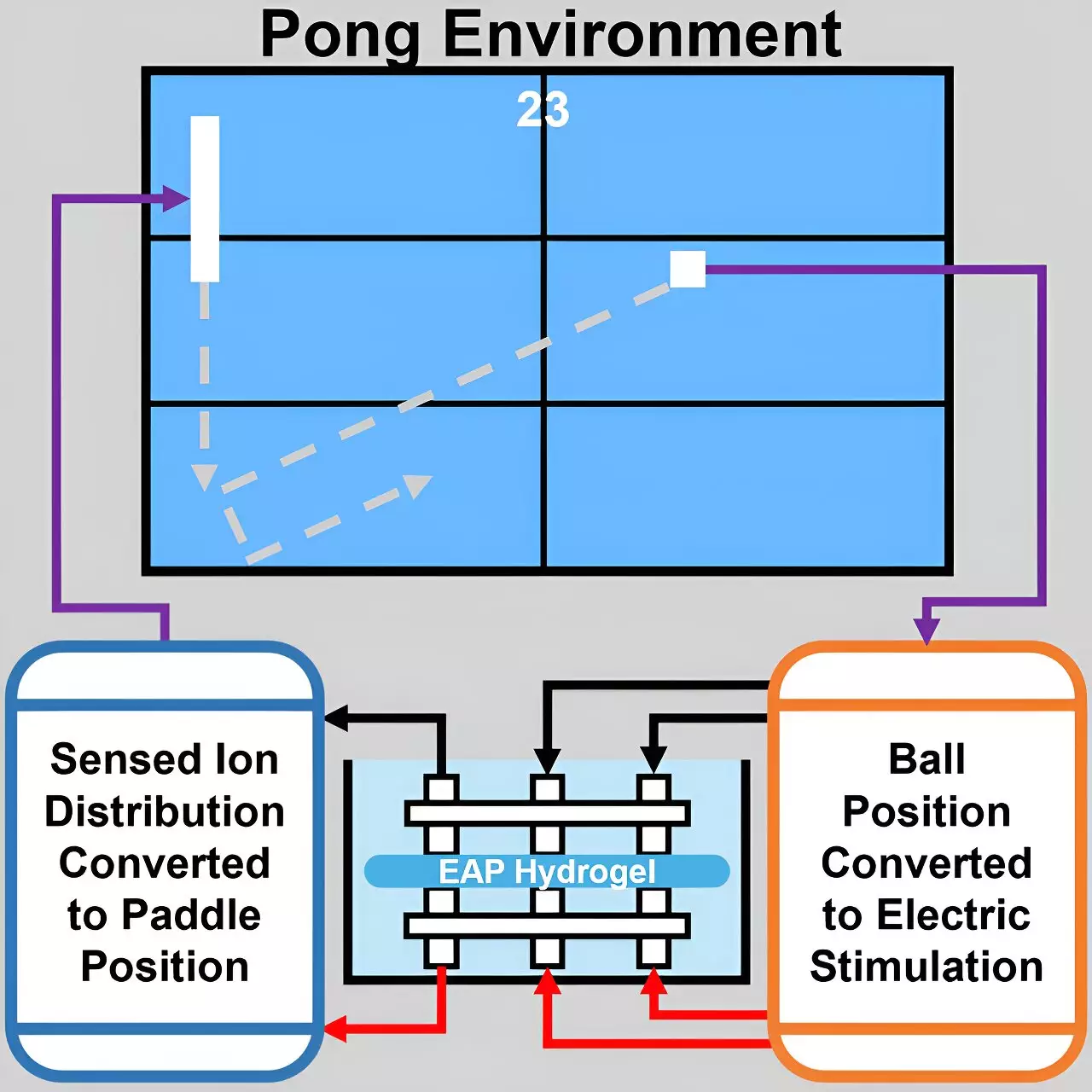A groundbreaking study published in *Cell Reports Physical Science* has unveiled the intriguing capabilities of hydrogels—a type of flexible and soft material—demonstrating that these simple substances can learn to play the classic 1970s video game “Pong.” Led by Dr. Yoshikatsu Hayashi and his team at the University of Reading, this research challenges the conventional wisdom that learning and adaptation are exclusive characteristics of complex biological systems or artificial intelligence (AI). Instead, it reveals that even basic materials can exhibit sophisticated behaviors typically associated with living organisms.
The researchers achieved this remarkable feat by integrating a hydrogel with a custom-built multi-electrode array that communicated with a computer simulation of the game. Over time, the hydrogel’s performance improved, revealing its capacity for a form of learning. Dr. Hayashi emphasized the significance of this discovery, stating, “Our research shows that even very simple materials can exhibit complex, adaptive behaviors typically associated with living systems.” This finding opens a new frontier for the development of “smart” materials that can respond and adapt to their environments, much like living organisms do.
The learning behavior exhibited by the hydrogel is attributed to the movement of charged particles, or ions, within the material in response to electrical stimulation. This ion migration can create a type of memory—or memory mechanics—that correlates with sensory-motor loops, akin to the functions of neural networks. According to Vincent Strong, the first author and a robotics engineer on the project, the ability of hydrogels to learn the dynamics of the game highlights their potential as simpler, yet effective, alternatives to conventional AI algorithms derived from neural networks.
The research team drew inspiration from earlier studies showing that neurons could learn and adapt to feedback through electrical stimulation. They posited that if brain cells can learn to play Pong, then artificial systems, such as hydrogels, may be capable of conducting similar computations. This line of inquiry raises profound questions regarding the nature of intelligence: Can simple materials possess forms of computing and adaptability that mirror biological systems?
Dr. Hayashi pointed out the fundamental similarities in ionic behavior between neurons and hydrogels, stating, “In neurons, ions run within the cells. In the gel, they run outside.” This parallels the concept that memory and learning do not necessarily require intricate cellular structures, suggesting a broader application of learning principles.
The implications of this research extend beyond the realm of gaming into more critical areas, such as medical science. A related study by Dr. Hayashi’s team showcased a different hydrogel that learned to synchronize its rhythmic beating with an external pacemaker—an unprecedented achievement for non-living materials. This oscillation in chemical and mechanical terms mimics the contraction patterns of heart muscle cells. The potential applications of such hydrogels in cardiac research are promising, especially in understanding the complexities of heart rhythms.
Dr. Tunde Geher-Herczegh, the lead author of this study, noted that synchronous hydrogel behavior could facilitate new insights into cardiac arrhythmia—a condition impacting millions globally. The challenge in studying arrythmia lies in differentiating the complex interactions of biological heart cells; hydrogels could simplify this by providing more controlled environments for investigation. Such advancements signify a shift toward alternative models that could reduce reliance on animal testing, aligning with ethical considerations in medical research.
Implications for Future Research
The intersection of neuroscience, materials science, and cardiac research highlighted in these studies suggests that the principles underlying learning and adaptation may be more universal than previously thought. The researchers foresee the vast potential of hydrogels and similar materials in sectors ranging from soft robotics and prosthetics to environmental sensing. This research serves as a call to action for further study into the mechanisms of memory in hydrogels and their applicability in real-world scenarios.
The work of Dr. Hayashi and his team not only challenges traditional views regarding intelligence and learning capabilities but also opens new avenues for the development of innovative materials and technologies. As the researchers continue to explore the complexities of hydrogel behavior, they may indeed be on the brink of unlocking transformative applications across various disciplines, thereby reshaping our understanding of materials science and intelligent design.

